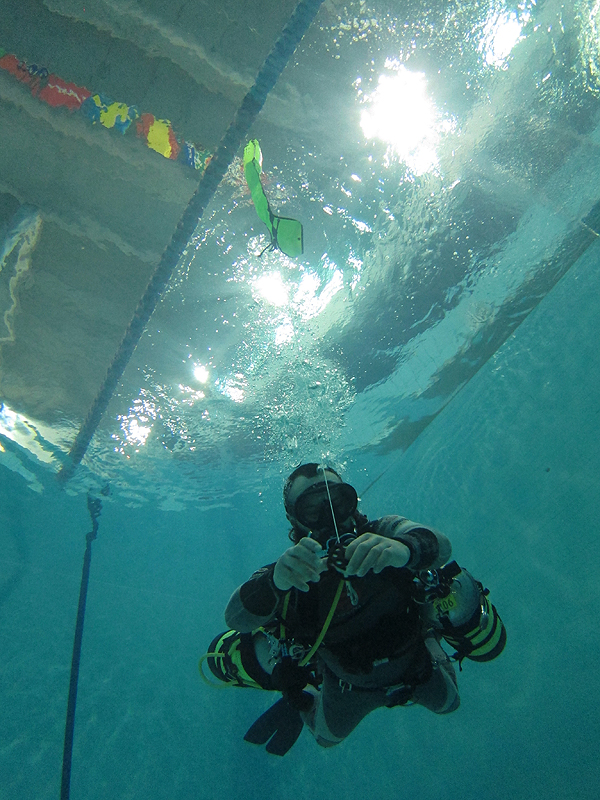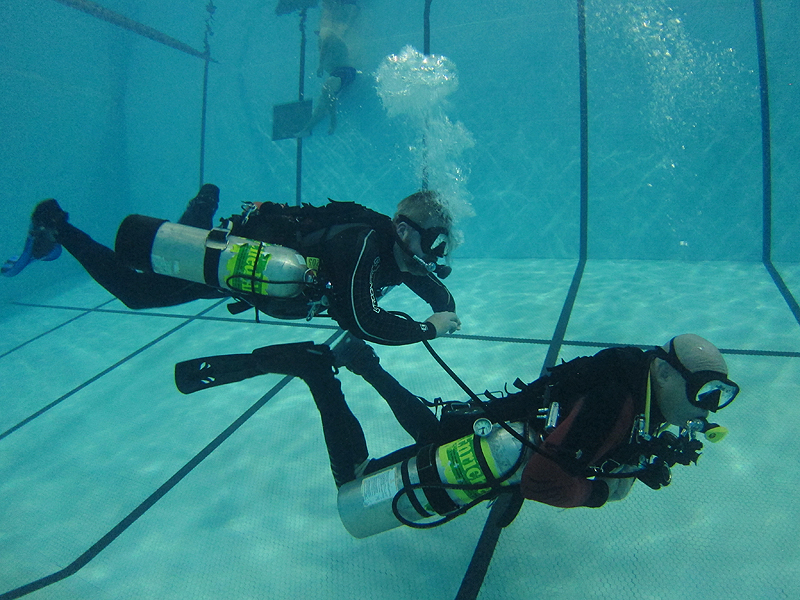We spent yesterday in the pool putting Nick, Doyle, Thomas and Mike through the paces during the confined water training session of their PADI Tec Sidemount course. This is the first step working towards their PADI Sidemount Instructor ratings.

Sidemount diving involves carrying cylinders along the side instead of the back.
Sidemount diving originated from cave diving, where divers often needed to squeeze through small spaces and for carrying multiple tanks for deep cave penetrations. It also lends itself well to wreck diving into small and confined areas.

Cylinders sit snuggly along body and under the armpits.
Sidemount diving has now become popular with recreational and technical divers alike as an alternative to carrying cylinders on the back with a number of potential advantages:
- Very streamlined when configured properly to reduce drag, snags and contact with marine environment.
- Cylinders can be carried and loaded individually as an alternative to heavy twin sets.
- Versatility. Sidemount works well with many types of recreational and a great way to expand capabilities with a single basic configuration.
- Equipment availability. Twin sets and manifolds can be difficult to obtain in some locations.
- Regulator and valves are in the front where they are visible and accessible.
- In recreational diving an out of gas problem is easily handled without your buddy as your primary alternate air source.
- Cylinders can easily be passed down and clipped on in water which aids kitting up on smaller boats in confined areas.

Thomas deploying an SMB and simulating decompression stops.
Sidemount has some draw backs to be aware of:
- Cumbersome in full kit out of the water.
- More complex gas management as with independent cylinders you must learn to switch regulators to keep the pressures relatively close between cylinders. Although solutions are available to connect cylinders and overcome this situation.
- Team mate unfamiliarity. You may find yourself diving with someone unfamiliar with sidemount, fortunately it is not difficult to show them what they need to know during pre-dive planning.

Mike practising with up to 5 cylinders at one time.
We are in the process of setting dates for more sidemount courses now, so if you are interested then keep an eye on our course schedule:
http://aucklandscubadive.co.nz/course-times.php
We can provide all the equipment for the course so all you need to do to try it out is turn up and see what all the fuss is about.
In addition, we will be adding the Sidemount Insrtuctor Specialty as an option for all our Tertiary Students as avaluable qualification they can take into the workforce…and it’s a whole lot of fun 🙂

Sharing air exercise.
Contact us for more information or call now on 09 4782814.
